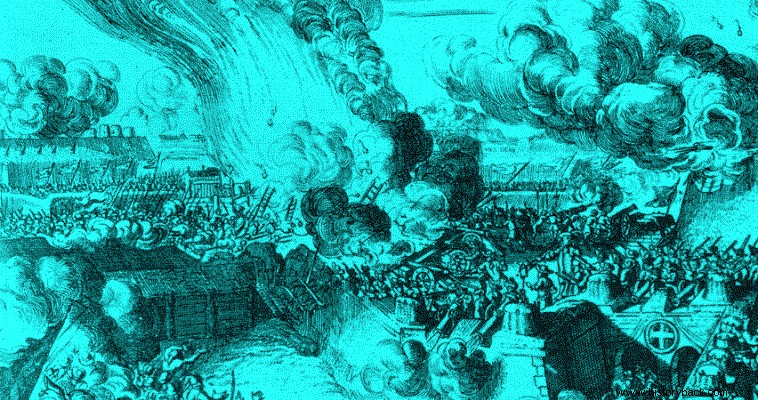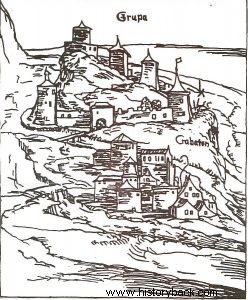
Krupa is a small town in today's Bosnia-Herzegovina. In 1565 things were different as the city was a border fortress between the Habsburg Empire and the Ottoman Empire which was still ruled by Suleiman the Magnificent, who was rather petty and dishonorable...
The death of Ferdinand of Habsburg, king of Hungary and Croatia, in 1564, led the "honest" Suleiman to the decision to violate the armistice agreement which had only signed with the Habsburgs in 1562. The pretext was the conflict between the favored Prince of Transylvania John Zapolia and Ferdinand's son and future Emperor Maximilian of Habsburg.
In Krupa there was a small castle built in the 13th century , on a steep rock near the river Una. At the roots of the rock was the walled polychne. Krupa had been a target of the Ottomans in 1509 and also in 1522-23. In both cases, however, the Turks retreated humiliated.
In 1565, however, the single Ottoman forces returned, occupying six of the Habsburgs, as the above-mentioned agreement was in force. Thus the castle was guarded by only 28 men under Matias Bakits . Against these brave few attacked the ex-Moto Mustafa Pasha Sokolovic of Bosnia with 12,000 men.
The Turks reached Krupa and on June 3rd they blockaded the castle and began the siege. Despite all expectations, however, the garrison withstood the first attacks! The defenders, not expecting help from anywhere, knew they were lost. Nevertheless, they fought more than heroically!
The days passed, the Turkish Pasha, literally, raged at his evil, but the castle endured. But the fate of the brave was predetermined. After 20 days of resistance, only 8 defenders were left standing and they were wounded.
So they decided to put an end to their agony themselves, not by killing themselves, but by charging – just 8 men – against their 12,000 opponents! On June 23, 1565, the 8, led by Bakits, made, like 300 others of Leonidas, their own exit on death, remaining in immortality. The six fell fiercely fighting against the faithless mob. Two managed to escape by falling into the river.

The castle in a period engraving.
